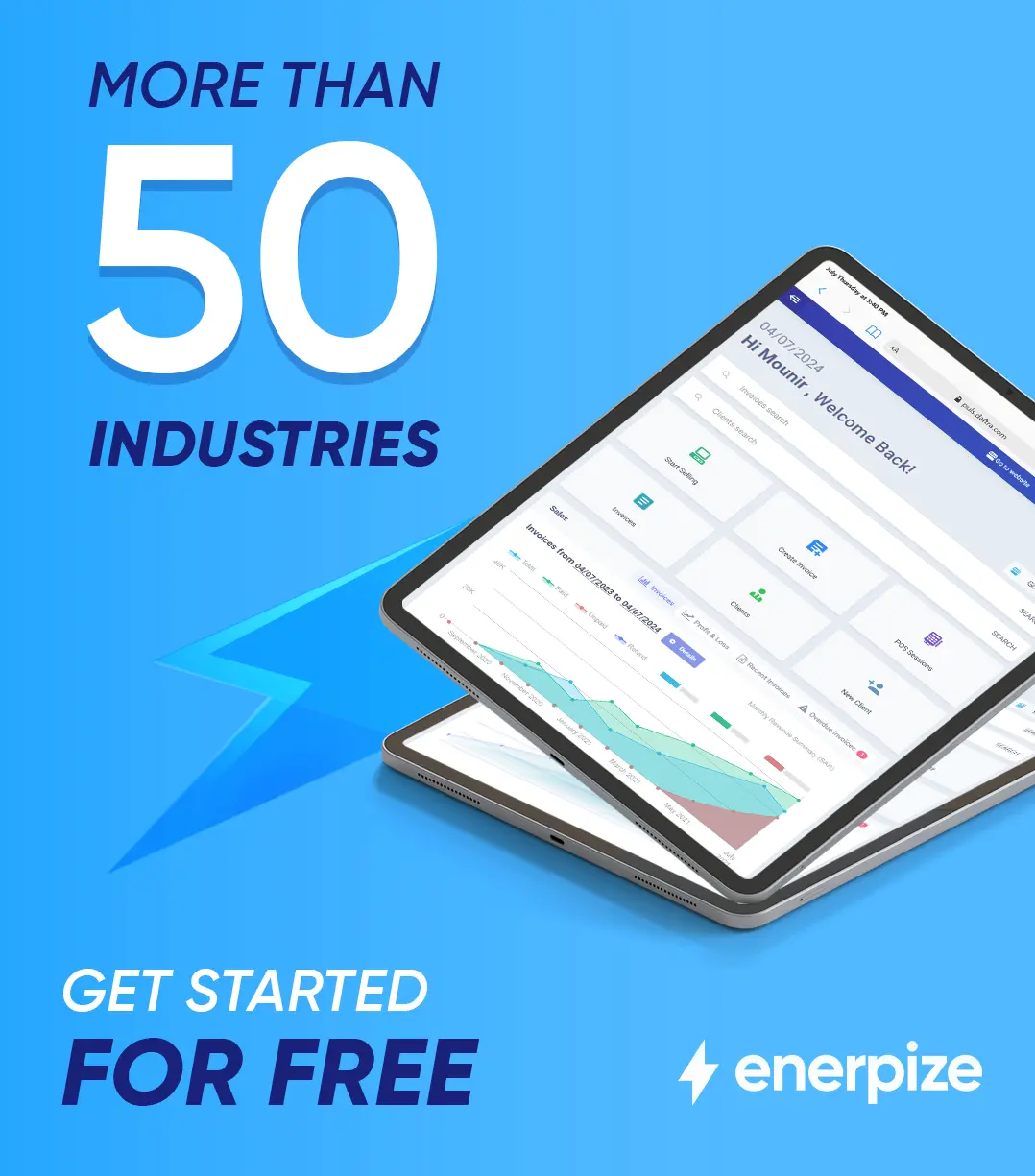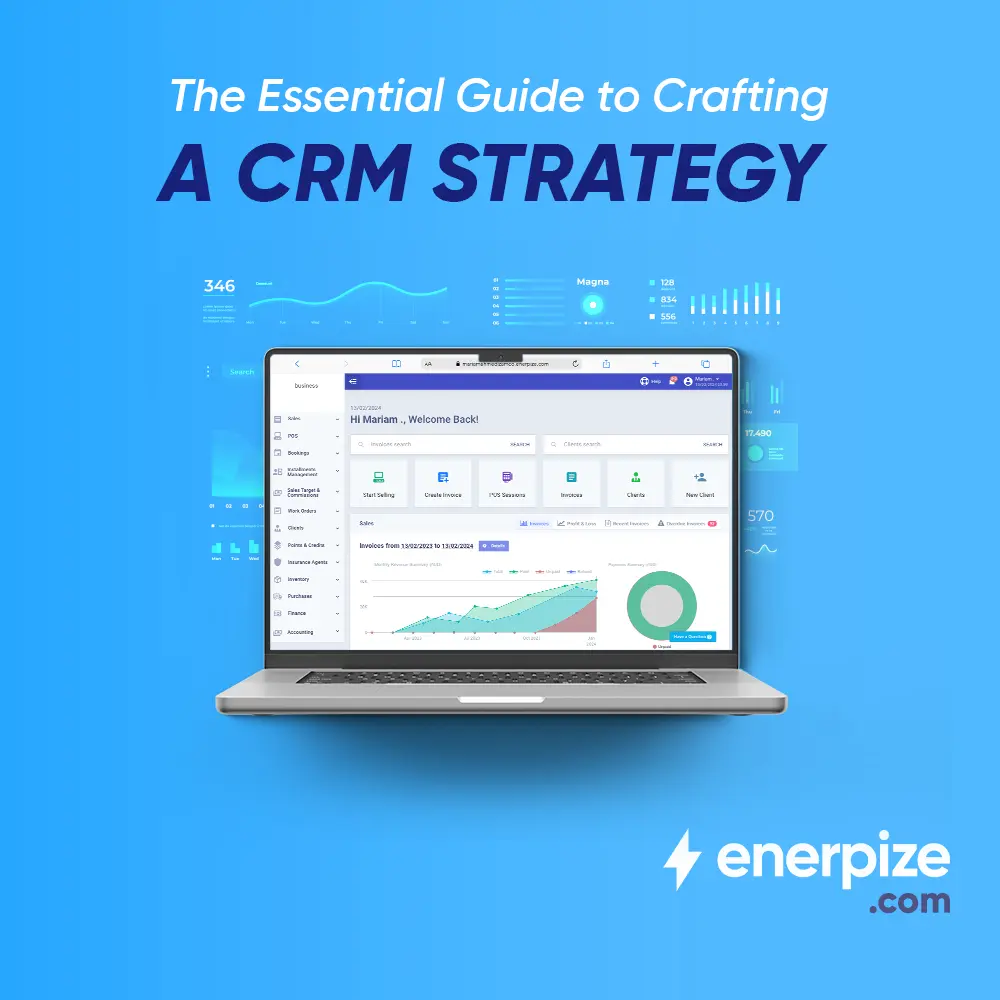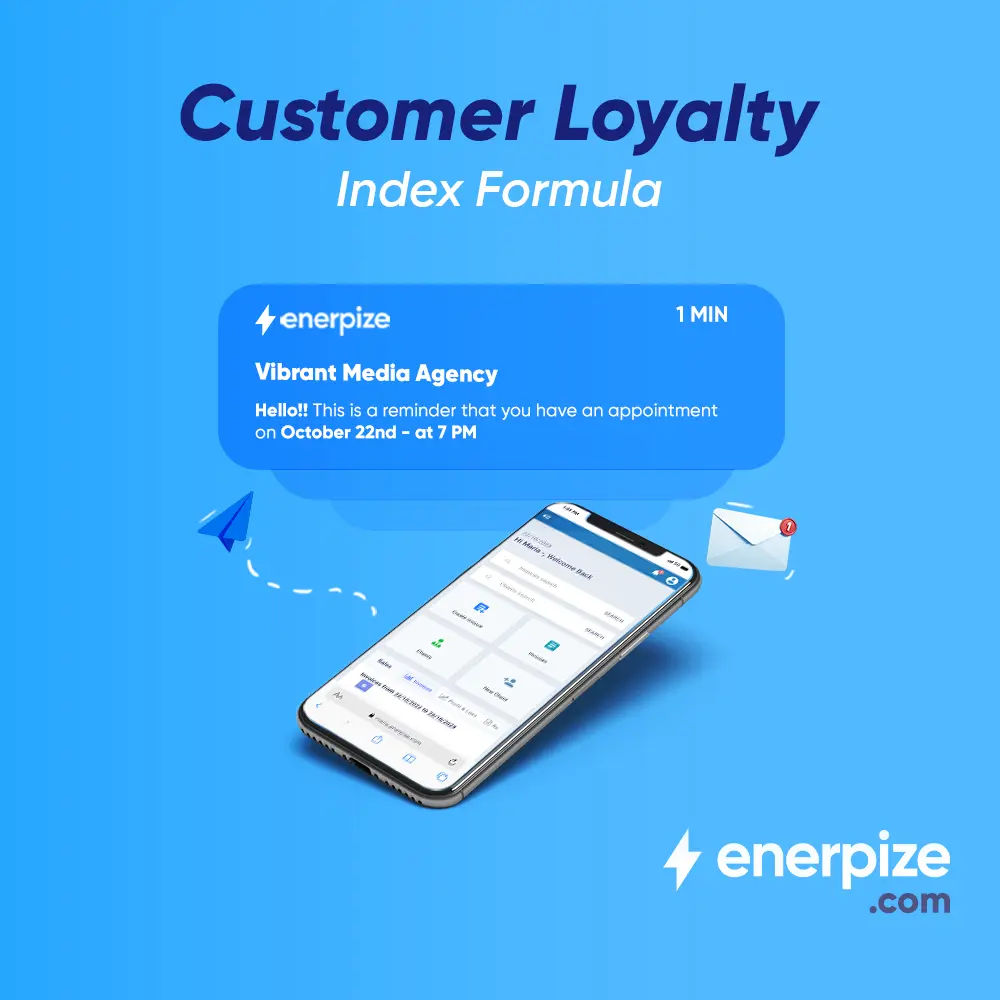Author : Haya Assem
Reviewed By : Enerpize Team
Customer Satisfaction Survey Comprehensive Guide

Customers are the key indicator of a company's success, which is why business owners utilize a variety of metrics to strategically adjust their methods, create long-term connections, and, eventually, boost their bottom line. These metrics are critical measures of customer satisfaction, loyalty, and the general health of the business.
One of the most significant and useful metrics is the customer satisfaction survey, which is a vital tool that allows businesses to communicate directly with their consumers.
Companies gain insights into customer satisfaction through carefully crafted questions and thorough investigation, identifying strengths to amplify and weaknesses to address. These surveys are more than simply a metric; they are a proactive approach to fostering customer loyalty and refining products or services.
This article will cover all you need to know about customer satisfaction surveys and how they play a critical part in the success of modern businesses.
Key Takeaways
- Customer satisfaction gauges how well a company's offering meets customer demands, assessed through surveys ranging from 'highly unsatisfied' to 'highly satisfied'.
- Customer satisfaction is vital for product/service success. Surveys with ratings like 'Highly Unsatisfied' to 'Highly Satisfied' measure performance. Metrics include scores, effort, and net promoter scores, reflecting customer loyalty and business growth potential.
- Customer satisfaction surveys evaluate experiences, aiming to enhance them. Define goals, choose survey type, craft questions, decide channels, and time, gather, analyze data, and identify actionable insights for improvement.
- Various customer satisfaction surveys include:
1. Customer Satisfaction Score (CSAT): Rates overall satisfaction numerically.
2. Customer Effort Score (CES): Measures task completion ease.
3. Net Promoter Score (NPS): Gauges likelihood of recommending.
4. Product Market Fit (PMF): Aligns product with market needs for widespread satisfaction. - Customer satisfaction surveys feature diverse question types:
1. Satisfaction Questions: Rate product/service satisfaction from 'Extremely Unsatisfied' to 'Extremely Satisfied.'
2. Customer Support: Assess support quality, issue resolution, and overall experience.
3. Demographic Questions: Gather information for marketing and sales segmentation.
4. Product Usage: Evaluate purchase rating, frequency, valuable features, challenges, and duration.
5. Overall User Experience: Measure usability, likelihood to recommend, future use, and identify frustrations or pain points.
What is customer satisfaction?
Customer satisfaction is a statistic that assesses how well a company's product or service satisfies and meets the demands of its customers. Companies may assess the health of their business by analyzing customer satisfaction on a regular basis and demonstrating how effectively products or services resonate with customers.
It can often be measured by customer satisfaction surveys, with each customer's responses indicating how satisfied he is, with responses typically ranging from 'highly unsatisfied' to 'highly satisfied'.
How to measure customer satisfaction?
Measuring customer satisfaction is crucial to keep your products or services on the right track. It will help you gain actual insights into your company and how it is performing with customers, as well as keep you up on the latest concerns customers are experiencing with your company.
The most common method for measuring customer satisfaction is the customer satisfaction survey which requires the customer to respond to some questions or rate the service or product and these answers vary between:
Highly Unsatisfied
Unsatisfied
Neutral
Satisfied
Highly Satisfied
Customer satisfaction metrics have different forms such as "Customer satisfaction score", "Customer effort score", "Net promoter score", and other forms of online surveys and direct feedback. Customers respond to multiple-choice questions, rating questions, and open-ended inquiries.
The higher the number of positive responses in the 'Satisfied' and 'Very satisfied' categories, the higher the total score. This suggests that customers are satisfied with the products or services, implying the likelihood of their loyalty and contributing to consistent business expansion.
Customer Satisfaction Survey Best Practices
Customer satisfaction surveys collect input from consumers to evaluate their experiences with a product, service, or overall engagement with a business.
The objective is to evaluate customer satisfaction, identify areas for improvement, to enhance customer experience. Here's an outline of how customer satisfaction surveys work:
Define objectives
Set defined goals before starting your quest for measuring customer satisfaction. Why are you measuring it? , and why are you measuring it now? What do you aim to gain from the results of the survey?
Without a specific goal, your measurement or data may be biased and won't help you reach your objectives. This stage also helps you understand how to build up your survey with the relevant customer satisfaction measures.
Select survey type
Select the type of survey that best fits your goals. This might be a transactional survey after a specific interaction, a periodic survey to track trends over time, an NPS survey for evaluating customer loyalty, or another type depending on your needs.
Craft survey questions
Create survey questions that are straightforward and concise. Questions should be relevant to the survey type and aimed at generating insightful results. Balance closed-ended questions (with predefined answer choices) for quantitative analysis and open-ended questions for qualitative feedback.
Determine survey channels
Decide how the survey will be delivered. There are many options to deliver your surveys such as email, online survey platforms, social media, website pop-ups, or even in-person methods. The choice of channel depends on your target audience and the nature of your business.
Set survey timing
Select the ideal time for sending in the survey. For transactional surveys, it's often best to send them shortly after the customer interaction to capture real-time feedback. Periodic surveys can be conducted regularly, such as monthly, weekly, or as needed.
Gather responses and analyze data
Collect responses from customers through the chosen survey channels. To increase response rates, make sure the survey is easy to use and accessible across different devices.
After that, you'll need to examine the survey data to identify trends, patterns, and important information that can help you determine where your brand is doing well and where it might need to make some improvements.
Identify actionable insights
Determine certain areas that need improvements or adjustments according to the results of the survey. Examine customer feedback for common themes, and prioritize actions that will have the most significant impact on satisfaction.
Different types of customer satisfaction surveys
Customer satisfaction surveys come in various forms, each designed to gather specific types of feedback and insights. Here are the most common types of customer satisfaction surveys:
Customer Satisfaction Score (CSAT)
A Customer Satisfaction Score (CSAT) survey is a feedback approach designed to assess customers' overall satisfaction with a product, service, or interaction. Typically, respondents are asked to rate their satisfaction on a numerical scale, often ranging from 1 to 5 or 1 to 10, with higher scores indicating higher satisfaction levels.
CSAT surveys frequently feature simple questions like, "How satisfied are you with our product/service?" Following that, respondents select the rating that best expresses their level of satisfaction.
Customer satisfaction score example
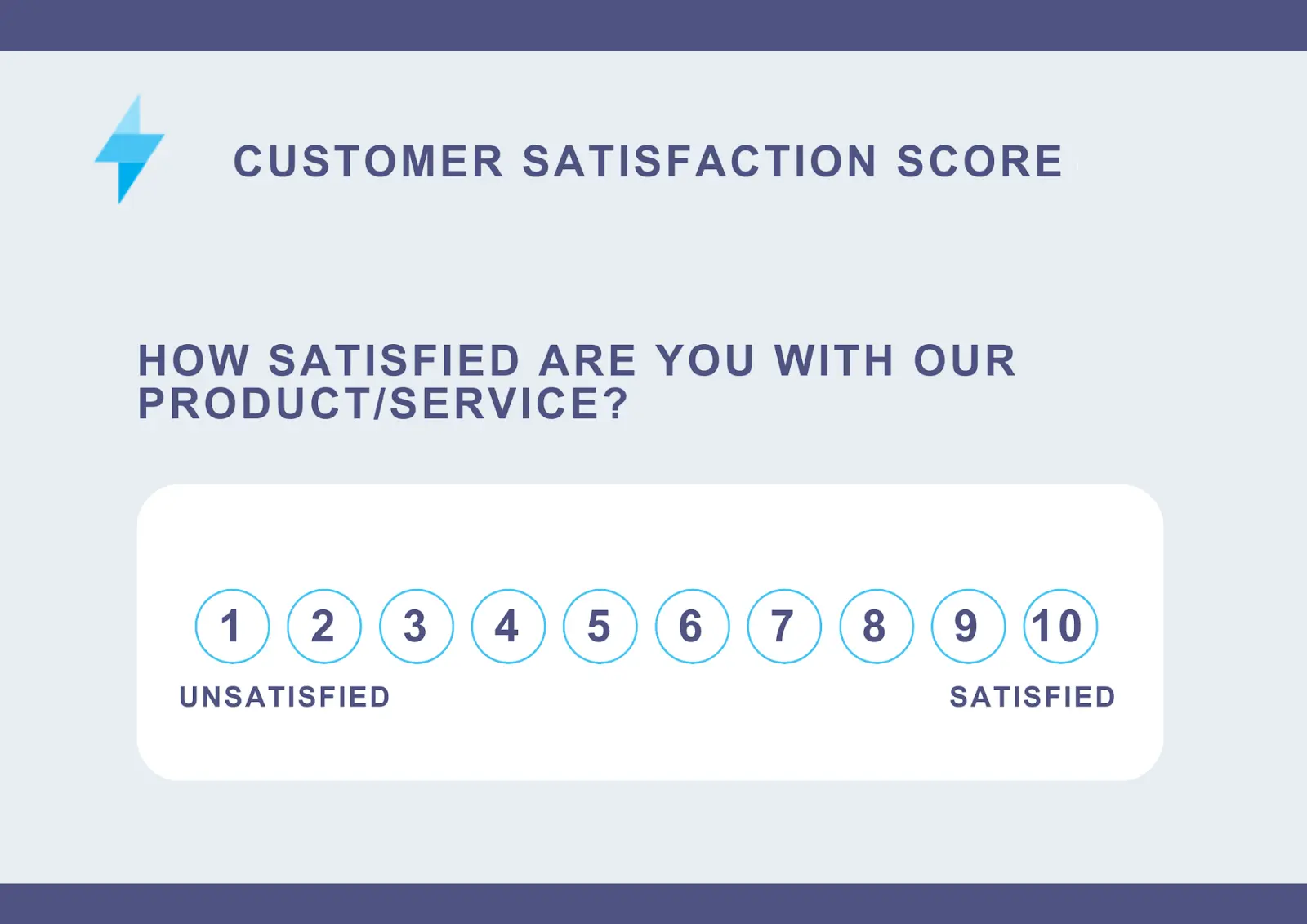
Customer Effort Score (CES)
Customer effort score (CES) surveys measure how easy a given interaction was for them to complete a specific task such as the checkout process, or interact with your support team. The primary focus is on determining the level of effort required by customers to achieve their objectives and resolve issues.
A CES survey operates similarly to a CSAT survey in that it asks customers questions about the ease of their experience, such as "How easy was it to complete your order?"
Based on the responses, you should determine whether customers find your service, product, or website easy to use or whether it needs to be improved.
Customer Effort Score example
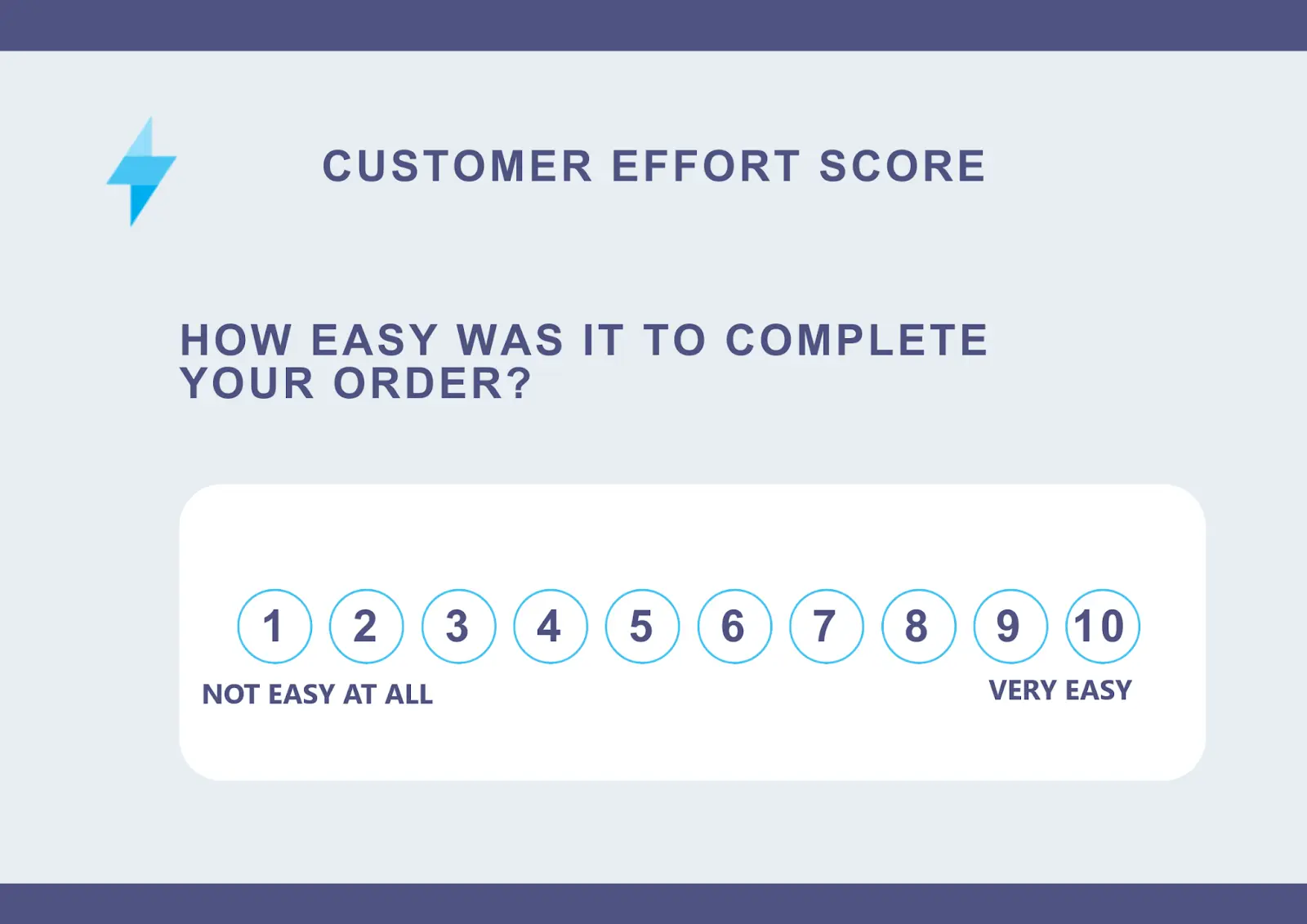
Net Promoter Score (NPS)
Net Promoter Score is one of the most popular customer satisfaction measuring tools, it is used to determine how likely customers are to promote your brand, product, or service to others through word-of-mouth.
Based on the Net Promoter Score system, these surveys typically ask customers to rate on a scale of 0 to 10 how likely they are to recommend the product or service to others. Based on their scores, the respondents are divided into three groups:
- Promoters (scores 9-10): These are customers who are extremely satisfied with your product or service and are likely to recommend it to others. They are regarded as loyal customers who may benefit your company through word-of-mouth recommendations.
- Passives (scores 7-8): These customers are pleased but not enthusiastic. They might not actively recommend your company, and their loyalty is considered neutral. While they are not dissatisfied, they are also not as likely to become strong advocates.
- Detractors (Score 0-6): These customers are dissatisfied and may not only be unlikely to recommend your product or service but may also share negative feedback. Detractors are at risk of switching to competitors and can potentially harm your company's reputation.
Net promoter score example
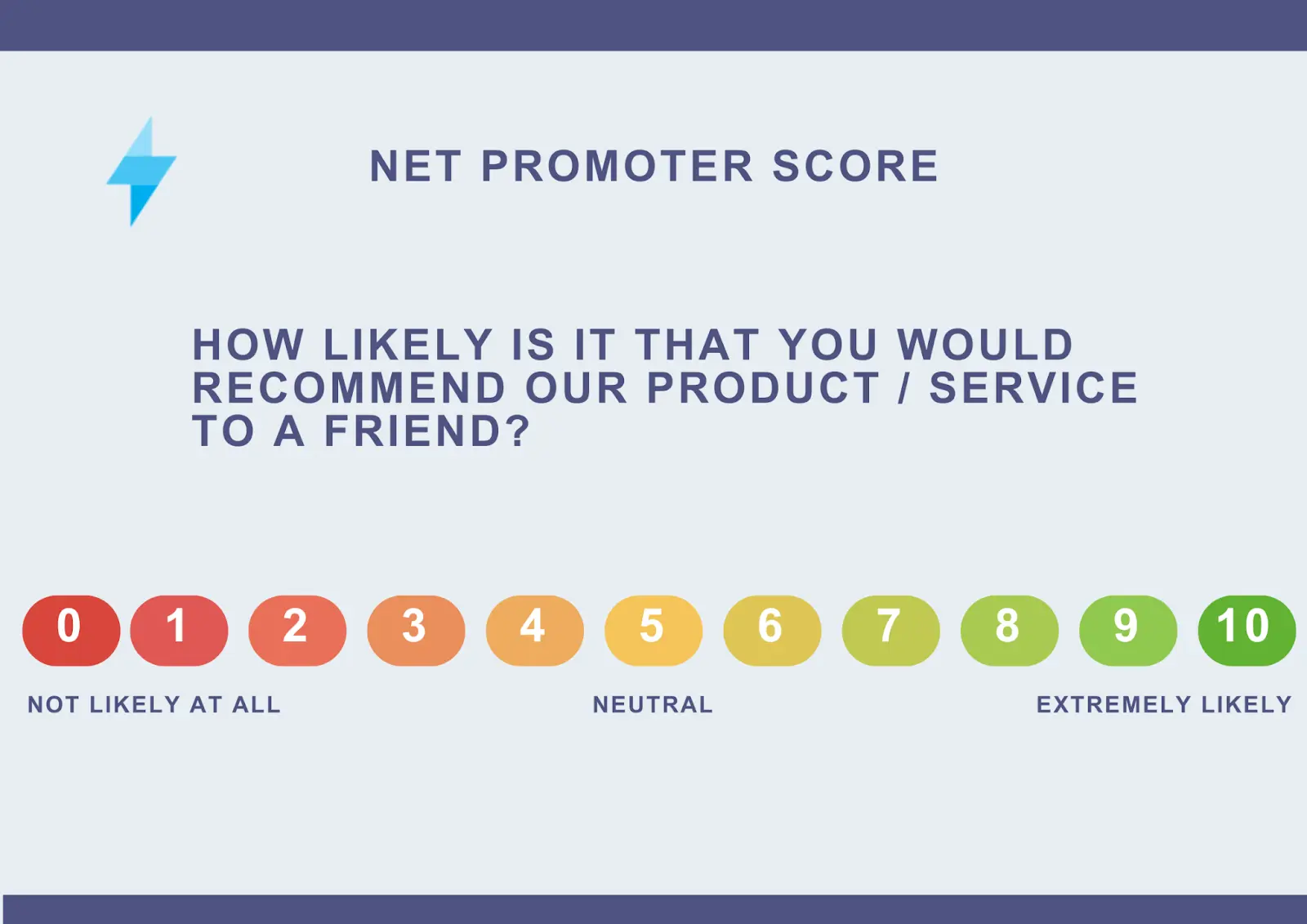
Product Market Fit (PMF)
Product-market fit (PMF) is a concept that signifies the alignment and resonance between a product and its target market. PMF refers to the stage at which a product satisfies the needs and demands of a specific market segment to a degree that results in widespread customer satisfaction and adoption.
It is usually performed by asking customers questions such as “How would you feel if you could no longer use our product/service?”. If you have more than 40%, you have reached Product Market Fit and will find it easier to build traction.
Product Market Fit example
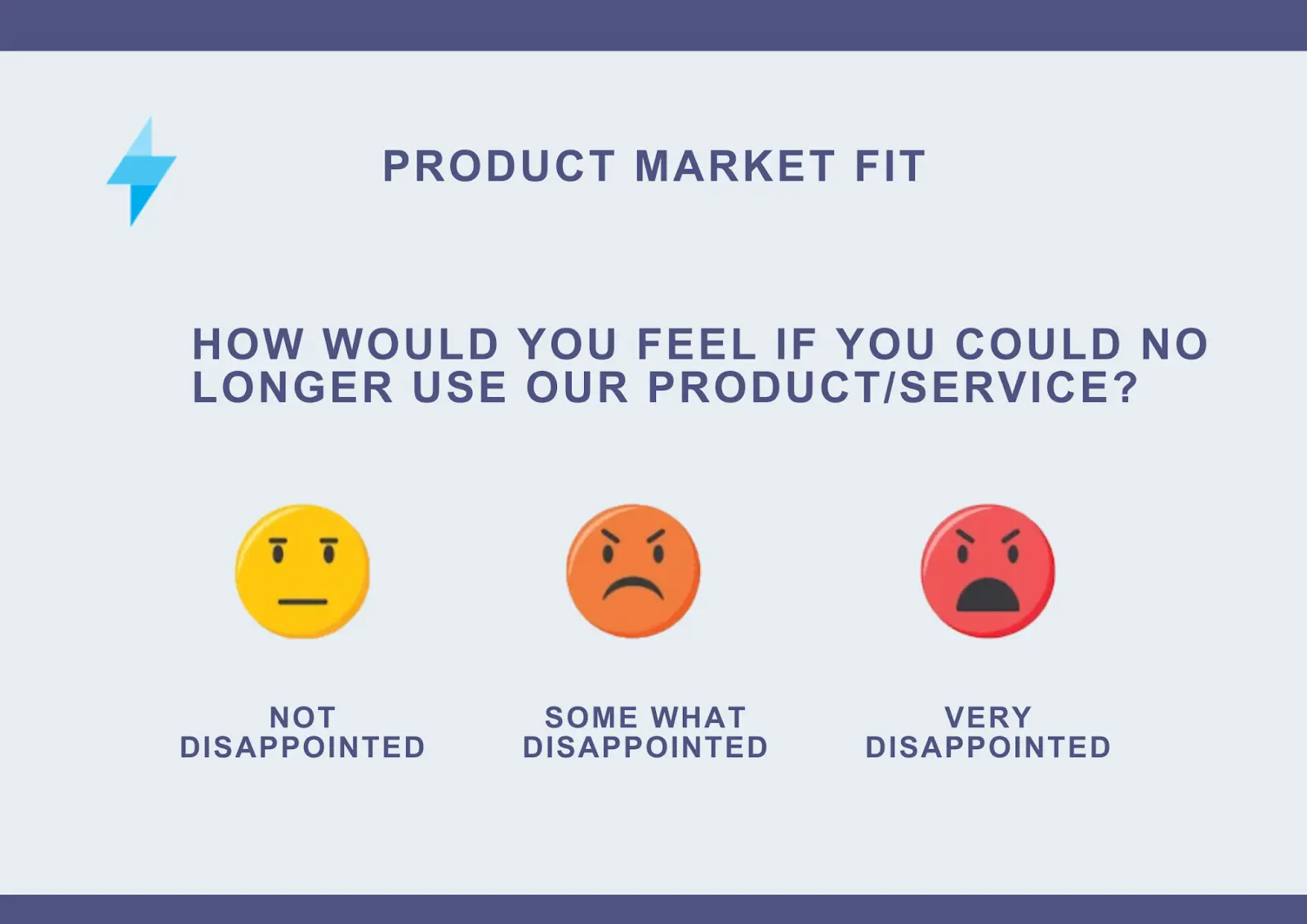
25 Key questions to measure and improve Customer Satisfaction
There are various types of customer satisfaction surveys, so, the survey questions vary from one form to another.
Customer satisfaction questions
These kinds of questions are the most common and straightforward way to evaluate how your business is performing with its customers and whether it needs to improve.
Customer satisfaction surveys are typically asked in the form of multiple-choice questions, with answers ranging from:
Extremely Unsatisfied
Unsatisfied
Neutral
Satisfied
Extremely Satisfied
Here are some common customer satisfaction survey questions:
How satisfied are you with our product/service?
Were you satisfied with your experience with us?
On a scale of 1 to 10, how satisfied are you with your experience today?
Considering your overall experience with us, how satisfied are you with the various aspects of our product/service?
Are you satisfied with the variety and range of products/services we offer?
Customer support experience
Customer support is the backbone of every company, and it plays a critical role in defining customer experiences. Its significance rests in guaranteeing customer satisfaction, loyalty, and long-term business success. Here is a list of 5 common customer support experience questions:
How would you like to rate the support you received?
Was the support representative able to resolve the issue?
How satisfied are you with the support?
How satisfied are you with the speed at which our customer service team addressed your inquiry or issue?
Considering your recent interaction with our customer service team, how satisfied are you with the overall experience?
Demographic questions
Demographic questions are meant to gather information about a particular group of people's characteristics. These questions assist marketing and sales in separating customers into buyer personas. Here are some common demographic questions:
In which age group do you belong?
Where are you located?
Where did you first hear about us?
Which industry do you work in?
What is your main goal for using this website/product?
Product usage
Understanding how customers interact with a product helps businesses tailor their offerings, improve user experience, and identify areas for enhancement. Here are some product usage questions:
How would you rate your purchase?
How often do you use our product/service?
Which product feature do you consider the most valuable?
How long have you been using the product?
Have you encountered any challenges or difficulties while using our product?
Overall User Experience
User experience (UX) questions aim to measure the overall satisfaction and usability of a product/service or the company's website from the perspective of the user. Check the following questions:
How easy was it to find what you need on our store/website?
On a scale of 0 to 10, how likely are you to recommend our product/service to others?
How likely are you to continue using our product/service in the future?
How satisfied are you with the overall experience of using our product/service?
Were there any specific frustrations or pain points you encountered while using our product/service?
Customer relation managing is easy with Enerpize.
Try our CRM module to manage your customer relations

